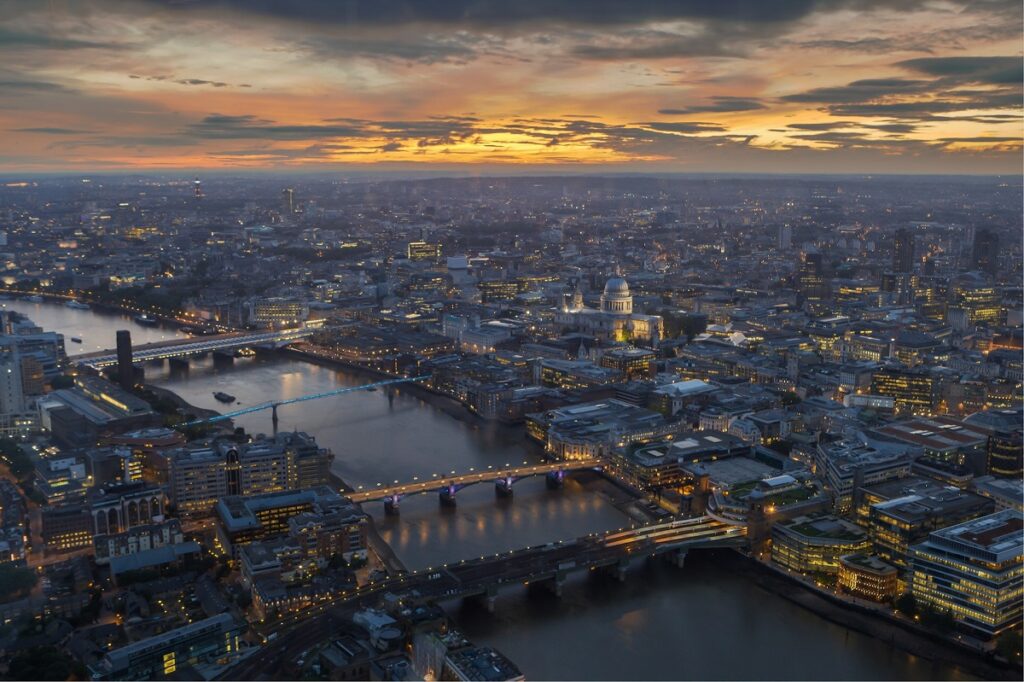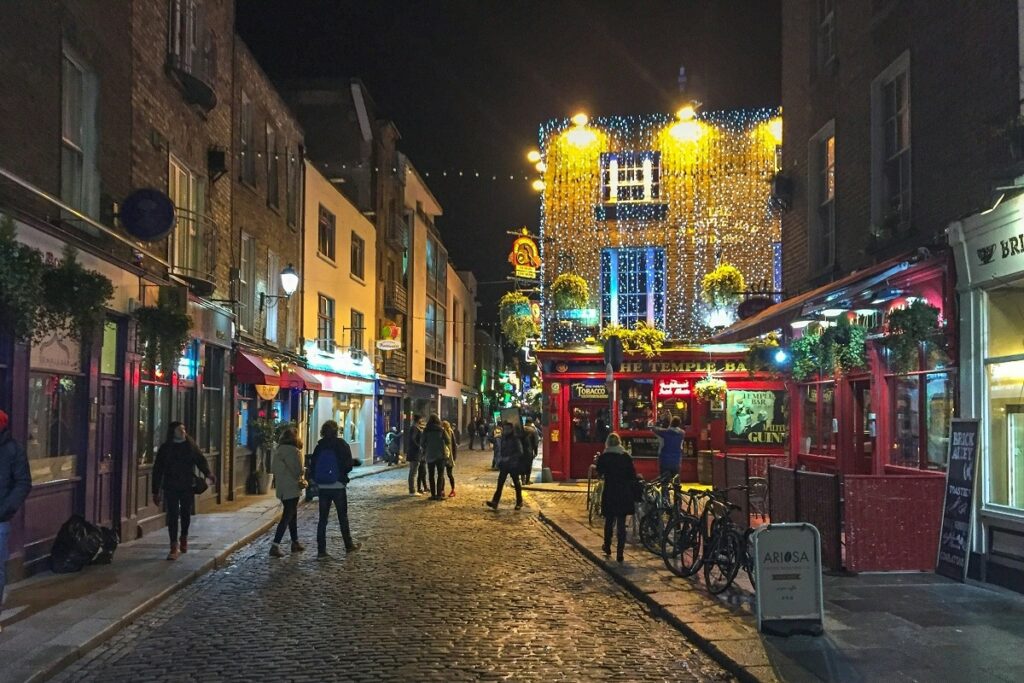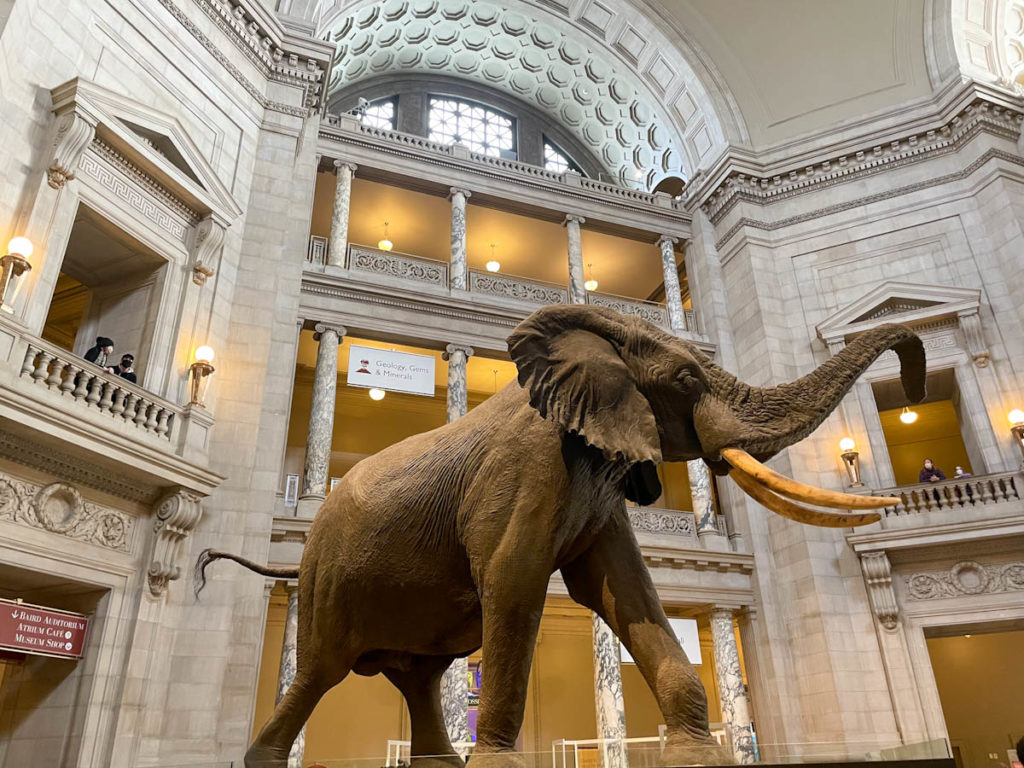Embarking on a journey through the United Kingdom to explore its natural history museums is an adventure that unveils the storied tapestry of the Earth’s past. From the bustling streets of London to the historic charm of Edinburgh, then crossing the sea to Dublin, each city offers a unique window into the natural world through the venerable halls of its museums.

London from the top of The Shard Photo by Jaanus Jagomägi on Unsplash
This voyage, supported by the UK’s extensive and efficient rail network, not only connects physical locations but also bridges various epochs of natural history. It invites travelers to step back in time and marvel at the wonders of our planet, facilitating a seamless journey through the rich landscapes and historical depth of the UK.
WHAT IS IN THIS POST
London: The Gateway to Natural Wonders
The journey begins in London, home to one of the world’s most famous natural history museums. The Natural History Museum in London is a cathedral of nature, housing a vast collection that spans billions of years, from the prehistoric to the present day. Visitors can stand beneath the towering skeleton of a blue whale, trace the origins of humanity, and explore the diversity of life on Earth, all under one roof. The museum not only educates but inspires a deeper appreciation for the natural world and our place within it.
Edinburgh: Scotland’s Treasure Trove of Natural History
Traveling northward on the train from London to Edinburgh, the landscape transforms, and so too does the focus of our exploration. Edinburgh, Scotland’s proud capital, boasts the National Museum of Scotland, which merges natural history with cultural artifacts, offering a comprehensive narrative of Scotland’s geological and biological heritage. Here, the natural wonders of Scotland are displayed in their full glory, from ancient fossils to specimens of local wildlife, each telling a story of survival and adaptation in the rugged Scottish landscape.
Dublin: A Journey into Ireland’s Natural Past
Crossing the Irish Sea, the journey continues to Dublin, where the National Museum of Ireland – Natural History, affectionately known as ‘The Dead Zoo,’ awaits. This museum offers a charmingly quaint yet fascinating glimpse into Ireland’s natural history, with two floors packed with displays of animals from Ireland and across the world. The Victorian charm of the museum adds to the experience, as visitors wander among cases filled with birds, mammals, and marine life, each specimen whispering tales of ecosystems both local and exotic.

Photo by Marco ten Donkelaar on Unsplash
Belfast: Uncovering the Natural Beauty of Northern Ireland
The journey culminates in Northern Ireland’s dynamic capital, Belfast that can be reached via the Dublin to Belfast train. Here, nestled within the exquisite Botanic Gardens, the Ulster Museum unfolds another chapter of natural history. Its exhibitions delve into the geological marvels of Northern Ireland, like the renowned Giant’s Causeway, and display a rich biodiversity that reflects the region’s natural splendor. The museum masterfully narrates the story of the land and its people, emphasizing the symbiotic relationship between nature and human history.
The United Kingdom: A Mosaic of Natural Histories
The exploration of the UK’s natural history museums offers a rich tapestry of experiences that illuminate the wonders of the natural world. Each institution, distinct in its focus and collection, enriches our comprehension of Earth’s vast history, the diversity of life, and the continuum of existence. This adventure affords travelers the extraordinary chance to span the UK’s extensive landscapes and to embark on a temporal voyage from the ancient world to contemporary times, reflecting on our planet’s past, present, and future.
The Journey’s Educational Essence
The exploration of natural history museums across the UK is more than a mere sightseeing adventure; it is an educational journey that enriches one’s understanding of the world. Each museum visited serves as a classroom without walls, where the lessons span the age of dinosaurs to the challenges of contemporary conservation. Engaging with the exhibits, visitors become students of the earth, learning about the fragile ecosystems that sustain life and the critical importance of preserving biodiversity for future generations. This journey not only broadens the horizons of knowledge but fosters a sense of responsibility towards our planet.
Connecting with Nature’s Story
Amidst the vast collections of fossils, minerals, and specimens, visitors to these museums find a personal connection to the natural world. It’s in the silent conversation with a million-year-old fossil or the awe-inspiring sight of a planetarium that one feels part of a larger narrative. This journey through the UK’s natural history museums offers a unique opportunity to reflect on humanity’s relationship with nature, encouraging a deeper appreciation for the wonders of the natural world and our role in its stewardship.

A Legacy of Curiosity and Conservation
The natural history museums of the UK stand as monuments to human curiosity and the desire to understand our world. They are custodians of the past, educators for the present, and advocates for the future. As this journey comes to a close, the enduring impact of these institutions is clear—they inspire a legacy of curiosity and a commitment to conservation. By unveiling the marvels of the natural world, they remind us of the beauty that surrounds us and the critical need to protect it, ensuring that nature’s wonders continue to enlighten and inform future generations.
In conclusion, traversing the United Kingdom to explore its natural history museums offers an insightful and enriching journey through time and nature. From the architectural grandeur and vast collections of London to the intimate and unique exhibits of Belfast, each stop on this journey provides a distinctive perspective on the natural world. These museums not only showcase the diversity of life and geological phenomena but also highlight the interconnectedness of all living things and the importance of preserving our natural heritage.
This exploration is a testament to the power of natural history museums to educate, inspire, and provoke thought, urging us to appreciate the beauty of the earth and to engage more deeply with the challenges of environmental stewardship. As we reflect on the journey through the UK’s temples of nature, we are reminded of the enduring wonder of our planet and the collective responsibility we share in safeguarding its wonders for the future.
Note: This post may contain affiliate links, partnership or sponsored content. If you purchase an item via one of these links, we may receive a small commission at no extra charge to you. But as always images and opinions are our own. For more information on our affiliates and privacy policy at Outside Suburbia see here.
CONNECT WITH US
